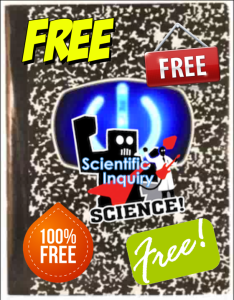
After splurging on Christmas gifts for the family, I was in a thrifty mood when surfing Amazon to find some new reading material for the break. So I checked out the free options in the Kindle store for science education books. Unfortunately there’s not much out there besides a few textbooks and Ontario school manuals, but one gem I discovered was Science and Education by Thomas Henry Huxley. To save you the trouble of checking Wikipedia: Huxley was an English biologist in the 19th century and is known for being a fierce advocate of Darwin’s theory of evolution, earning him the nickname “Darwin’s Bulldog”. He also coined the term “agnostic” to describe his views on the existence of God, and thanks in part to his efforts science became part of the British school curriculum.
The book Science and Education is really a collection of orations and essays that he gave discussing the nature of the sciences, its relationship with culture and relation, and why science should be taught in schools. A lot of the speeches seem dated (there are some cringe-worthy lines about race and intelligence in particular), but two stand out: one entitled “On the educational value of the natural history sciences” (the full text is available here), and “Science education: notes of an after-dinner speech” (full text). In regards to science education they are both so spot-on they could have almost been written today. So what did a guy in 1854 have to say about science education before it was even introduced into the school system? Check out these quotes…
“Science is, I believe, nothing but trained and organised common sense, differing from the latter only as a veteran may differ from a raw recruit: and its methods differ from those of common sense only so far as the guardsman’s cut and thrust differ from the manner in which a savage wields his club….The man of science, in fact, simply uses with scrupulous exactness the methods which we all, habitually and at every moment, use carelessly”
Putting aside the “savage” metaphor, Huxley makes clear that the method of scientific thinking is nothing extraordinary, it employs the same critical thinking and logic people use on an everyday basis, it is only the discipline and training through repeated use that makes scientific thinking so effective. In other words- scientific thinking is innate to all of us and can be taught to anyone.
On the issue of whether young children can or should learn about about science:
“I doubt whether any toy would be so acceptable to young children as a vivarium of the same kind as, but of course on a smaller scale than, those admirable devices in the Zoological Gardens.”
“As I have already said, a child seeks for information about matters of physical science as soon as it begins to talk.”
“And if not snubbed and stunted by being told not to ask foolish questions, there is no limit to the intellectual craving of a young child; nor any bounds to the slow, but solid, accretion of knowledge and development of the thinking faculty in this way.”
As an elementary science educator, is always surprising that even today there are those who don’t understand the appropriateness of science education for young children. So many people forget how utterly instinctive a child’s curiosity and urge to investigate is. A science education that taps into these instincts and develops them into knowledge and skills is obviously appropriate (and necessary) at any level.
OK- so far so good Mr. Huxley, but what exactly should be taught? What do you 19th century guys know about standards and benchmark?
“I do not mean that every schoolboy should be taught everything in science. That would be a very absurd thing to conceive, and a very mischievous thing to attempt. What I mean is, that no boy nor girl should leave school without possessing a grasp of the general character of science, and without having been disciplined, more or less, in the methods of all sciences; so that, when turned into the world to make their own way, they shall be prepared to face scientific problems, not by knowing at once the conditions of every problem, or by being able at once to solve it; but by being familiar with the general current of scientific thought, and by being able to apply the methods of science in the proper way, when they have acquainted themselves with the conditions of the special problem.”
Touche. Huxley goes on to describe an ideal scientific curriculum that begins in elementary with studying the phenomena of Nature (kind of like combined Earth and Life sciences) to deal with questions of the observable world. Then as students writing, reading, and mathematics skills improves with age he advocates for “physical sciences” to be introduced, including experimental physics and fields of biology such as botany, with a dash of chemistry and human physiology. Not too shabby.
And what about pedagogy? Surely someone writing over 150 years ago had a very different perspective than our enlightened educational understanding today… right??
“If the great benefits of scientific training are sought, it is essential that such training should be real: that is to say, that the mind of the scholar should be brought into direct relation with fact, that he should not merely be told a thing, but made to see by the use of his own intellect and ability that the thing is so and no otherwise.”
“But if scientific training is to yield its most eminent results, it must, I repeat, be made practical. That is to say, in explaining to a child the general phænomena of Nature, you must, as far as possible, give reality to your teaching by object-lessons; in teaching him botany, he must handle the plants and dissect the flowers for himself; in teaching him physics and chemistry, you must not be solicitous to fill him with information, but you must be careful that what he learns he knows of his own knowledge. Don’t be satisfied with telling him that a magnet attracts iron. Let him see that it does; let him feel the pull of the one upon the other for himself. And, especially, tell him that it is his duty to doubt until he is compelled, by the absolute authority of Nature, to believe that which is written in books.”
Thud! **Jaw hits the floor** This was the icing on the cake for me- Huxley, in 1869 mind you, is literally describing constructive learning theory and advocating for an inquiry-based approach to science education. And this is of course, before there even was such a thing as science education. It was even taught in schools yet, and Huxley himself was basically self-educated. Perhaps that’s why he could see the issue so clearly- his opinion was clouded by any educational traditions or assumptions. In fact the traditional education of the time consisted entirely of rote learning and memorization via books, so he was well aware of the limitations of this.
It’s clear that Huxley was a man ahead of his time, but also the fact that his words resonate so well today underscores just how self-evident this approach to science education is. Yes, we have a body of educational research today that confirms best-practices, and we’ve invented a whole language of educational jargon to go along with it, but if the best approach to science education was obvious to someone 150 years ago, then it should be pretty freakin’ clear to us by now! So the next time someone starts waxing on about today’s educational reforms in inquiry-based science, you just tell ’em about Darwin’s bulldog, who figured it out before science education even existed.
Read Full Post »
 I’m a huge advocate for collaboration in and out of the classroom. Too often, teachers work in isolation behind closed doors, missing out on opportunities to share ideas with colleagues, get feedback, and grow professionally. Even if teachers reach out within their own school to collaborate, many are missing the chance to collaborate on a worldwide scale. Early on in my teaching career I was inspired by the likes of Dan Myer (math blogger extraordinaire) who not only blogged thoughtfully about teaching, but also published his lessons and videos freely- for anyone to use in their own classroom. It begged the question: Why doesn’t everyone do this? Especially in an age where teachers are just as likely to turn to the internet for lesson ideas as they are to the textbook, I firmly believe all teachers should simply share more of what they do.
I’m a huge advocate for collaboration in and out of the classroom. Too often, teachers work in isolation behind closed doors, missing out on opportunities to share ideas with colleagues, get feedback, and grow professionally. Even if teachers reach out within their own school to collaborate, many are missing the chance to collaborate on a worldwide scale. Early on in my teaching career I was inspired by the likes of Dan Myer (math blogger extraordinaire) who not only blogged thoughtfully about teaching, but also published his lessons and videos freely- for anyone to use in their own classroom. It begged the question: Why doesn’t everyone do this? Especially in an age where teachers are just as likely to turn to the internet for lesson ideas as they are to the textbook, I firmly believe all teachers should simply share more of what they do. A problem I’ve been kicking around for a while is how to give my students clearer feedback on their learning progress. In a standards-based system this can be a challenge, because feedback is more detailed than a single percentage grade; a single assignment often covers more than one learning goal and therefore is given multiple grades. This detail can be very useful to the student for guiding their learning, but only if they are able to take it all in and manage the feedback in a positive way.
A problem I’ve been kicking around for a while is how to give my students clearer feedback on their learning progress. In a standards-based system this can be a challenge, because feedback is more detailed than a single percentage grade; a single assignment often covers more than one learning goal and therefore is given multiple grades. This detail can be very useful to the student for guiding their learning, but only if they are able to take it all in and manage the feedback in a positive way.
 After months of delays it’s finally here! On Friday the draft of the
After months of delays it’s finally here! On Friday the draft of the 




